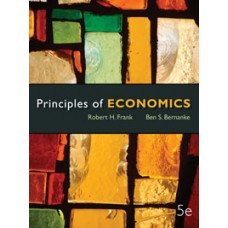Shopping Cart
0 item(s) - $0.00Test Bank for Principles of Economics, 5e Robert H. Frank
Add to Compare
Principles of Economics, 5e Robert H. Frank test bank
Table of Content
Chapter 1: Thinking Like an Economist
Chapter 2: Comparative Advantage
Chapter 3: Supply and Demand
Chapter 4: Elasticity
Chapter 5: Demand
Chapter 6: Perfectly Competitive Supply
Chapter 7: Efficiency, Exchange, and the Invisible Hand in Action
Chapter 8: Monopoly, Oligopoly, and Monopolistic Competition
Chapter 9: Games and Strategic Behavior
Chapter 10: Externalities and Property Rights
Chapter 11: The Economics of Information
Chapter 12: Labor Markets, Poverty, and Income Distribution
Chapter 13: The Environment, Health, and Safety
Chapter 14: Public Goods and Tax Policy
Chapter 15: Spending, Income, and GDP
Chapter 16: Inflation and the Price Level
Chapter 17: Wages and Unemployment
Chapter 18: Economic Growth
Chapter 19: Saving, Capital Formation, and Financial Markets
Chapter 20: Money, Prices, and the Financial System
Chapter 21: Short-Term Economic Fluctuations
Chapter 22: Spending, Output, and Fiscal Policy
Chapter 23: Monetary Policy and the Federal Reserve
Chapter 24: Aggregate Demand, Aggregate Supply, and Business Cycles
Chapter 25: Macroeconomic Policy
Chapter 26: Exchange Rates, International Trade, and Capital Flows
Write a review
Your Name:Your Review: Note: HTML is not translated!
Rating: Bad Good
Enter the code in the box below:
Buy Test Bank Solution Manual © 2025








